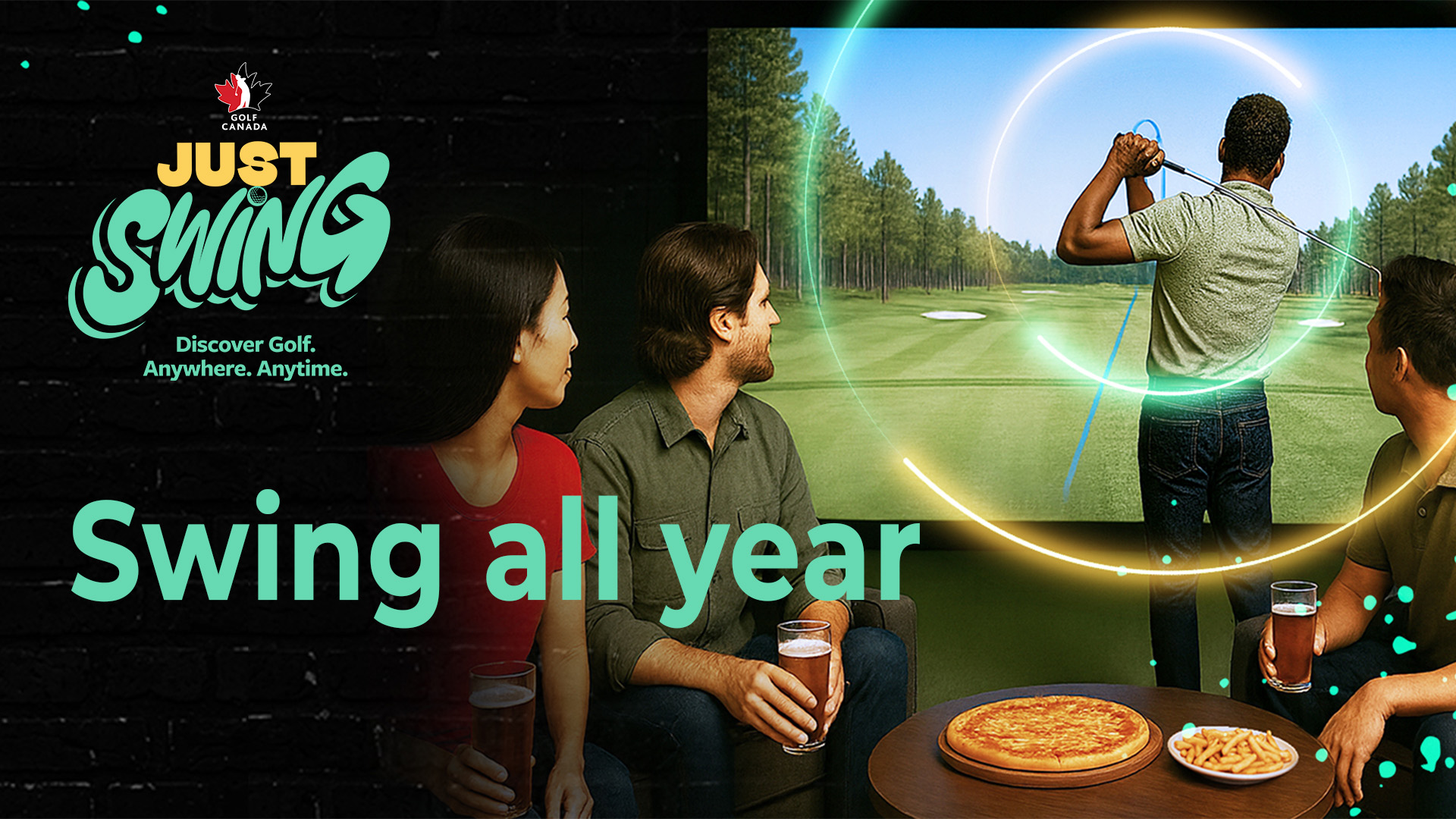Adam Stanley/ Golf Canada
When the first flakes of snow fall, many Canadians from coast to coast realize that, as unfortunate as it may be, golf season is ending. Or is it?
From downtown lounges with craft beer taps to makeshift setups in basements or garages, golf simulators are reshaping how people practice, play, and socialize around the sport.
What began as a high-end training tool for elite players has rippled into a consumer wave that’s expanding access and changing perceptions of golf across the country.
Market numbers show there’s no slowing down1: the simulator sector is expanding quickly, and revenue projections show the golf simulator market in Canada is set to almost double over the next half-decade or so as both commercial venues and in-home installs increase.
At the heart of the exciting expansion is the technology of it all – evolving faster than most realize. Modern systems pair radar and camera-based launch monitors with physics engines and ultra-realistic course mapping, such as from Foresight and TrackMan.
Coaches routinely use simulator data for swing diagnosis and club-fitting, while recreational players can instantly compare numbers and replay shots in slow motion.
And, well, the virtual golf course designs these days? They just look really cool.
On the commercial side, indoor golf lounges and training centers are popping up in downtown cores and suburban plazas across the country.
Ottawa is a perfect example of this as Canada’s capital city boasts a golf simulator bar about two blocks away from Parliament Hill where, yes, you can even hit balls on a virtual driving range set up on Parliament’s front lawn, plus plenty others in its growing suburbs, like Silverwood’s Golf and Lounge where menu bites like braised beef crostini and the Augusta wrap (featuring pimento cheese, obviously) are on offer.
“We knew that golf was always going to flourish in something like this, but the thing that tops you up is providing the top-notch service,” says Eric Glynn, the owner and director of operations of Silverwood’s. “The first position I hired was the general manager, who had tons of food and beverage experience and a passion for golf. Kitchen manager and head chef also have a passion for golf.”
These spaces market themselves as more than places to bang balls – they are social destinations as well. Friends can play Pebble Beach in 60 minutes, companies can host team-building events, beginners can swing sticks for the first time in a low-pressure setting, and even young kids can try to ‘destroy’ cars and trucks.
Silverwood’s has this something-for-everyone set up perfected. They have bays with regular bar-stool seating, VIP rooms that are fully glassed in where golfers can play their own music and watch what they want on TV, and then even quieter private rooms for the more serious player.
“We figured out how to amalgamate that and put things together and create a series of classes within our facility,” says Glynn, whose facility is celebrating its two-year anniversary in 2025. “It’s an entertainment place where people would be happy to come and escape from whatever the case may be.
“You can come in for an hour, book your real estate, and enjoy yourself. There are women with babies and strollers. There are ladies who just want to socialize. It morphed into more than just golf.”
Operators are quick to emphasize the convenience: full rounds of golf on iconic courses are condensed into tight time blocks, reservations are easy via apps or online booking portals, and the environments are climate-controlled. It’s a mix of social entertainment and serious practice time for low-handicap players. The same technology on the range at a PGA TOUR event is what these simulator facilities also use.
Indoor simulator facilities are drawing in younger and more diverse crowds who, well, appreciate a place for a good hang. It’s simple, really, simulator facilities remove the biggest obstacle for golf in Canada – weather – while also making the experience shorter and less intimidating.
That accessibility is nudging new demographics toward the game — women, younger urban residents, and busy professionals who want a post-work social hour of sport. Operators and national bodies are starting to see simulators not as a threat to traditional clubs, but as a funnel that can introduce players to outdoor golf when the season allows.
On the consumer side, basements, spare rooms, and garages are being converted into multi-purpose entertainment hubs. While big-time Tour tech can get up there in price, there has never been more affordable technology than there is now. Entry-level systems mean even weekend warriors can get meaningful feedback or have virtual fun without breaking the bank.
While the calendar limits golf outdoors to certain times of year, the simulator now does more than extend the season — it’s helping reshape golf into something even more social and accessible, one (virtual) shot at a time.
Just Swing!







